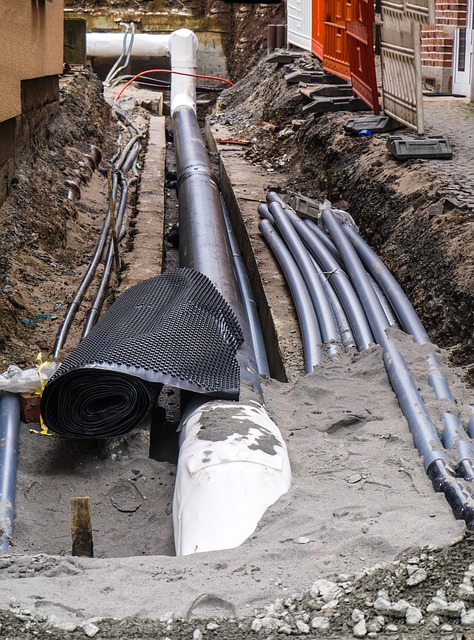Water leaks caused by worn parts can lead to significant damage and high costs. To prevent this, understand common causes (gaskets, pipes, fittings, valves) and inspect areas like sinks, toilets, water heaters, and faucets for moisture or mold. Regularly check for unusual noises, dampness, and use tools like moisture meters. Conduct visual inspections, flush heaters and toilets, and quickly shut off water and repair leaks to save money and avoid property damage. Implement Pipe Leak Detection Tips for early detection and regular maintenance for optimal results.
Water leaks can cause significant damage and costly repairs. This comprehensive guide helps you understand, detect, prevent, and fix plumbing leaks before they become major issues. From identifying common causes and areas to inspect, to utilizing effective tools and techniques for early identification, this article provides practical pipe leak detection tips. Learn preventative measures and reliable repair solutions to manage leaks efficiently and keep your home or business safe from water damage.
- Understanding Water Leaks: Common Causes and Areas to Inspect
- Detecting Pipe Leaks: Tools and Techniques for Early Identification
- Preventative Measures and Repair Solutions for Effective Leak Management
Understanding Water Leaks: Common Causes and Areas to Inspect

Water leaks are a common plumbing issue that can cause significant damage and lead to costly repairs. Understanding the causes and areas to inspect is crucial for early detection and prevention. Common causes include worn-out gaskets, corroded pipes, loose fittings, and faulty valves. These problems often arise from natural wear and tear, extreme temperatures, or poor installation.
To detect a pipe leak, start by inspecting common problem areas like bathroom and kitchen sinks, toilets, water heaters, and faucets. Check for any signs of moisture or mold growth, as these can indicate active leaks. Additionally, pay attention to your water meter and compare usage over time. Unexplained spikes could signal a leak somewhere in your plumbing system. Regular maintenance and prompt action on potential issues can help avoid major disruptions and save you from expensive repairs.
Detecting Pipe Leaks: Tools and Techniques for Early Identification

Detecting pipe leaks early is crucial to prevent costly plumbing damage and save money. There are several pipe leak detection tips you can employ to identify potential issues before they escalate. One common method involves listening for unusual noises, such as dripping or running water, which could indicate a leak somewhere in your pipes. Checking for dampness or mold growth in basements, attics, or walls is another effective way to spot leaks, as moisture often gathers around affected areas.
Using specialized tools like moisture meters or leak detectors can significantly enhance your chances of successful pipe leak detection. Moisture meters measure water content in materials, while leak detectors emit signals that pick up on water-related vibrations. Regular visual inspections are also beneficial, paying close attention to pipes and fittings for signs of corrosion, cracks, or bulges, which could point to underlying leaks.
Preventative Measures and Repair Solutions for Effective Leak Management

Regular maintenance is key to preventing water leaks and costly plumbing damage. Start by scheduling periodic inspections, especially in areas prone to leaks like joints, fittings, and pipes behind walls or under floors. Utilize Pipe Leak Detection Tips such as checking for moisture or dampness on surfaces, examining pipes for corrosion or cracks, and monitoring water meter readings for sudden changes. Regular flushing of water heaters and toilets, along with cleaning air conditioning condensers, can also help prevent leaks.
When a leak does occur, swift action is essential. Begin by shutting off the water supply to the affected area using your home’s main shut-off valve. Then, assess the damage and choose an appropriate repair solution. For small, surface-level leaks, applying a waterproof sealant or replacing faulty joints might suffice. However, for larger issues, such as burst pipes, professional plumbing services may be necessary. Prompt repair not only saves money but also prevents further damage to your property.
Water leaks are a common yet costly plumbing issue, but with the right knowledge and preventative measures, you can save money and reduce damage. By understanding common causes, utilizing effective detection tools, and implementing proactive strategies, you can master leak management. Remember, early identification through regular inspections and Pipe Leak Detection Tips is key to minimizing repair costs and preventing further complications. Stay proactive in maintaining your plumbing system for a smoother, leak-free experience.
